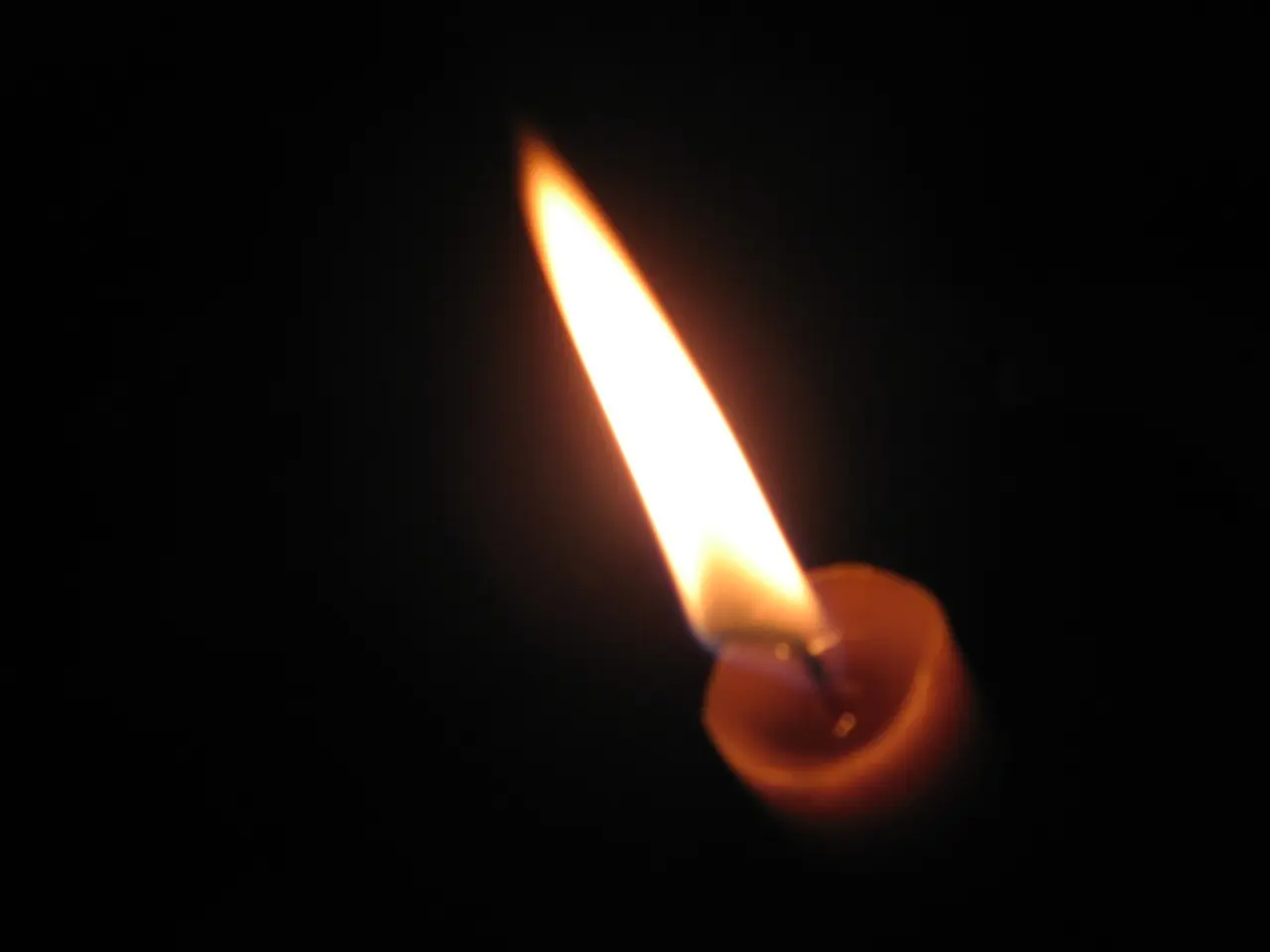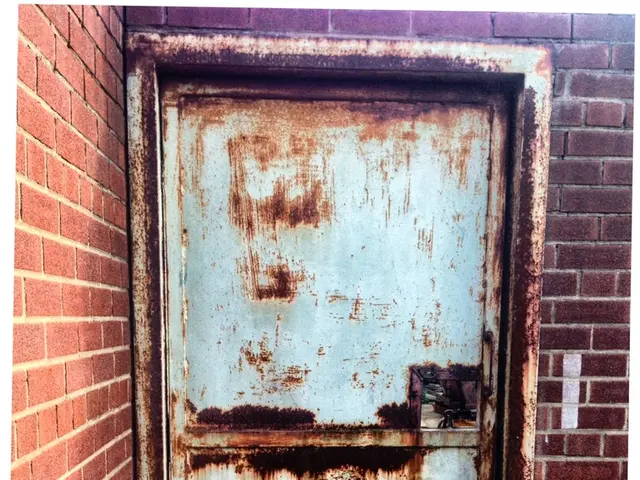Craft Candles Today: Key Guidelines for Candle-Making Novices
Making your own candles at home can be a rewarding and enjoyable hobby. For beginners, soy wax is a popular choice due to its ease of use and eco-friendly properties. Here's a comprehensive guide to help you get started on your candle-making journey.
Safety is paramount when working with hot wax. Keeping the wax under control, ensuring fresh air, and cleaning up spills quickly can prevent accidents. It's advisable to wear heat-resistant gloves and long sleeves, and to have a metal or glass container nearby for melting wax.
When it comes to fragrance, a variety of oils are recommended for homemade candles. These include lavender, vanilla, rose, sandalwood, lemongrass, citrus blends, orchid flower, neem basil honey, and neroli. The typical guideline is to use about 1 ounce of fragrance oil per pound of wax, which corresponds to a 6-10% fragrance load.
Adding fragrance oils at the recommended temperature is crucial to preserve scent strength during burning. Allow your candles to cure for at least 48 hours or more after pouring to help fragrances bind well with the wax and improve scent throw before and after lighting. You can also blend different fragrance oils to create unique scents.
Wooden wicks give a crackling sound when burning but require special attention for trimming. For container candles, glass jars, metal tins, and ceramic pots are popular choices as they contain melted wax well. Both fragrance and color should be added off direct heat to avoid burning the scent or fading the color.
The candle making process involves melting the wax, adding scents and colors, and pouring the liquid wax into containers. If wax spills onto a hard surface, wait until it cools and hardens, then scrape it off gently with a plastic scraper.
Candle making is a beginner-friendly hobby that allows for savings, customization, relaxation, and gift-making. Molds come in different shapes for making pillar or votive candles without containers. Silicone molds are flexible and easy to remove candles from.
Keeping candles out of drafts during setting helps ensure smooth surfaces. Color can be added to the wax using liquid dye or color chips. Good air flow is important during candle making to keep air fresh and prevent strong scents and tiny particles from wax and fragrance oils from accumulating.
For fresh spills, use paper towels to blot up liquid wax carefully. The wick should be centered and straight for an even burn, and using a wick too small or too big can cause issues. Cotton wicks are common and work well with soy and paraffin wax, with some having paper cores for stiffness.
If wax touches fabric, place the fabric between layers of paper and iron on low heat to lift out the wax. Paraffin wax is cheaper and widely available but is made from petroleum, which some prefer to avoid. If needed, topping up with more wax after the first pour finishes can fix any sinkholes.
The wax should be poured into containers with wicks centered and secured, at a temperature of 130 to 160°F or 54 to 71°C, to avoid cracks and uneven surfaces. Soy wax is popular for candle making due to its clean burn, ability to hold fragrance well, and suitability for container candles.
Correcting tunneling in candles involves using the right wick size for the candle diameter, trimming the wick to about 1⁄4 inch before lighting, and letting the candle burn long enough during the first use to melt the entire top layer. If the wax touches fabric, place the fabric between layers of paper and iron on low heat to lift out the wax.
Beeswax is natural, burns longer, and has a nice honey scent, but it is pricier and harder to scent with added fragrance oils. Containers are easier for first-timers since the wax cools inside them and cuts down on spills.
Remember, safety is key when working with hot wax. Keep a small fire extinguisher nearby just in case. Hot wax should never be heated above 200°F (93°C) to prevent catching fire or releasing harmful fumes. The wax should be melted slowly using a double boiler or a heat-safe container inside a pot of hot water to prevent burning.
With these tips in mind, you're now ready to embark on your candle-making adventure. Happy crafting!
[1] Fragrance Oils for Homemade Candles: A Comprehensive Guide. (2021). Retrieved from https://www.fragrancex.com/blog/fragrance-oils-for-homemade-candles-a-comprehensive-guide [2] How to Make Soy Wax Candles: A Step-by-Step Guide for Beginners. (2020). Retrieved from https://www.brambleberry.com/learn/how-to-make-soy-wax-candles-step-by-step-guide [3] The Best Essential Oils for Homemade Candles. (2020). Retrieved from https://www.thesprucecrafts.com/essential-oils-for-homemade-candles-4122810 [4] How to Make Candles with Soy Wax. (2019). Retrieved from https://www.wikihow.com/Make-Candles-with-Soy-Wax [5] Candle Making Tips for Beginners. (2021). Retrieved from https://www.candlescience.com/learn/candle-making-tips-for-beginners
Read also:
- Benadryl: Impact on Pregnancy, Breastfeeding, and Beyond
- Affordable Luxury and Economy Converge in the 2025 Lexus LBX: Compact luxury car unites budget-friendly pricing, efficiency
- Company manufacturing Plumpy'Nut is thrilled beyond belief!
- Enhancements to Networking in Senior Care, Fedding Positive Experiences for Service Providers and Elderly Residents




